 |
||||||
| July 15, 2008
Audiophiles are generally detail-oriented folk. Most audiophiles I know sweat the small stuff: each component chosen with utmost care, everything assembled just so. Then the tweaking begins: cables need to be properly routed and lifted; vibration-control devices are placed under each component; power filtration is employed to perfect the incoming AC; and so on and so on . . . If you’re one of those audiophiles, you probably attend to the small details because you know that, to one degree or another, everything matters. Even if the differences between employing and not employing a certain tweak are tiny, and require you to strain your ears to hear improvements that you still think only might exist, it’s better to be safe than sorry. In audiophilia, the highly tweaked system is the norm. But if you’re that sort of audiophile and you haven’t addressed your listening room’s acoustics, get real: you’ve neglected the single most important link of the audio chain. All those tweaks, all that careful attention to detail -- all of it is minuscule compared to the effect your room’s acoustic has on the sound. When your audio system is playing music, acousticians say, only about 50% (some say less) of the sound you hear is coming directly from the speakers to your ears. The rest of the sound -- half of it -- first bounces off and is altered by your room’s boundaries and materials, not to mention the furniture, before it gets to you. This single, simple fact has profound importance for all audiophiles, and bears repetition: At least half of the sound you hear has been changed by your room before it reaches your ears. Logic would seem to dictate that if the ratio of direct to altered sound you’re hearing is 50/50, the music should be a jumbled-up mess. After all, the direct sound hits our ears first, followed by the reflected sound a short time later. Luckily for us, our brains make sure that that isn’t a problem. In a phenomenon known as the Haas Effect, different sounds arriving at our ears within a time window of about 30 milliseconds are perceived as a single sound, and that single sound is perceived as coming from the source of the sound that arrived first -- in this case, the speakers. This explains our ability to locate the physical sources of sounds, both in the real world and in the listening room. But don’t get the impression that, because of the Haas Effect, sound reflections don’t matter. They do -- just not so much in terms of time and localization. Although all of the sounds that reach our ears within the first 30ms will be perceived as a single sound, to fully grasp the importance of room acoustics, you need to understand how direct and reflected sounds combine in other ways. Anechoic chambers In an anechoic chamber, there are no room boundaries for soundwaves to interact with. Essentially, an anechoic chamber is a room designed to not reflect soundwaves -- which is why loudspeakers are measured in such rooms. The measurements posted at www.speakermeasurements.com are of the soundwaves produced by the speaker alone -- the "room" has been eliminated from the equation. But once you get your shiny new speakers home and set up in your listening room, their direct output can be heard only as part of a mixture that also includes those soundwaves as reflected, diffused, and absorbed by the surfaces of the room itself. Frequency response Because the brain compensates for the fact that a direct sound and its reflections arrive at our ears at different times, for the most part we don’t have to worry about it. What the Haas Effect doesn’t compensate for is how the frequency response of the system is changed by the mixture of direct and reflected sound. Frequency response is the measure of a system’s reproduction of an input signal of constant amplitude and equal energy at all frequencies (usually from 20Hz to 20kHz). For instance, if you play pink noise (defined as equal energy per octave) through your system and measure what comes out, you have the frequency response. The closer the frequency response appears to a flat line, the closer your system is to passing along the signal unaltered. This is where reflected sound comes in: Unlike an anechoic chamber, your listening room dramatically alters the frequency response of your audio system. The boundaries of your room reinforce some frequencies while canceling out others, and the furnishings, drapes, and carpet absorb more sound. The frequency response you hear at your listening seat is a combination of the direct sound from your speakers and these reflections from the walls, floors, and ceiling. In short, you’ve spent a lot of time and money to ensure that your audio system is as perfect as possible, and that your speakers produce a pristinely flat frequency response in the anechoic chamber -- but your room has screwed it all up, changing everything in a big way, and all for the worse. It doesn’t seem fair. What you can do The first thing you can do is choose your audio system, particularly your loudspeakers, wisely. Buying a speaker that has a relatively flat anechoic frequency response and a smooth dispersion off axis is a good start. The next thing you should consider is outfitting your room with passive room treatments, as prescribed by professional analysis. (Although a detailed explanation of how to address the acoustic properties of a listening room is beyond the scope of this article, you can read all about it in Parts One, Two, and Three of my "Building the Music Vault.") These aren’t perfect solutions, but until recently they were all that was available. Speakers vary widely in their ability to pass along a signal unaltered, and no speaker produces a perfectly flat frequency response. Some are much better at this than others, but not one comes even close to the best electronics in this regard. Nor are rooms that have been extensively treated, such as my own Music Vault, perfect -- though the Vault is worlds better than it was before. Untreated rooms are complete unknowns to the average audiophile -- some are better than others (just like speakers), and the worst are train wrecks (just like bad speakers). To remain ignorant of what your room is doing acoustically is to leave 50% of what you hear to chance. Electronic room correction, the newest tool available to audiophiles on the quest for great sound, attempts to compensate for your room’s acoustical anomalies by altering the audio signal. Because this is done in the digital domain, it is typically part of an A/V processor, which is fed a digital signal by a source component such as DVD or CD player. There are also standalone room-correction components that are not part of an A/V processor, but all such systems share some basic methodology: Your audio system’s acoustic output -- and, therefore, your room’s contribution to that sound -- is measured using a microphone placed at your listening position (and at other positions, depending on the room-correction system). These measurements are then interpreted by a software program. The signal fed to your speakers is then altered, based on the results of the measurements and the fixes prescribed by the software. The goal, generally, is to improve frequency response and other acoustic properties, to minimize the distortion created by your room as you listen to music.
Electronic room correction isn’t brand-new -- TacT, Audyssey, and other firms have marketed such products for some time -- but in increasing numbers, the industry is answering the call for more room-correction solutions: the number of such systems I saw at the 2008 Consumer Electronics Show was impressive, and the sound from some of these products was even more impressive. Paradigm Electronics Inc.’s Anthem division was showcasing their new Anthem Room Correction software, which they call ARC. Shoehorned into a medium-sized hotel room was a full 7.1-channel system that included ARC, implemented via their Statement D2 audio/video processor.
Although Anthem’s Statement D2 is generally used as part of a full home-theater system (it can correct up to seven channels, plus a subwoofer), this article focuses on what it can accomplish in a professionally designed listening room with a high-end, two-channel stereo system that includes two subwoofers: in my case, the Rockport Technologies Altair speakers and a pair of JL Audio’s Gotham g213 subwoofers. I won’t repeat everything in the ARC instruction manual -- you can read a fairly explicit account of how to operate the ARC system on Anthem’s website -- but here’s a capsule explanation: The ARC comes standard with any new Statement D2 A/V processor ($7500 USD), or as an upgrade ($399) to D2s and D1s already out in the field. You receive a program for your computer, loaded via a CD-ROM whose serial number matches that of your D2, an omnidirectional microphone (also matched to your D2 and CD-ROM), and an adjustable microphone stand. On running ARC on your computer, you’re prompted to answer a series of questions -- for instance, the number of speakers in your system. You’re also instructed to place the microphone at ear height at your primary listening position. The measurement phase begins with a series of test tones fed to each speaker and sub in turn. When all speakers have played the test tones for the first microphone position, ARC instructs the user to move the mike to the second position, which should be at least 24" from the first. The cycle of test tones then repeats. When you’ve completed this process for five mike positions, you’re done. ARC then calculates and displays your system’s measured frequency response, the target (ideal) frequency response, and, finally, how close to that target response the ARC has determined it can get. (The ARC applies correction to both peaks and troughs, though correction of the latter is limited to about 3dB -- too much equalization of troughs can result in damage to the speakers or amplifier.) ARC then sends its correction data from your computer to the Statement D2 via the D2’s RS-232 port (no USB yet). You can save separate Movie and Music settings -- say, more room gain for more bass output for Movies, and less room gain for a more neutral sound for Music. Other options include an Advanced mode that lets you adjust crossover frequencies, level of room gain, and the upper-frequency cutoff. For instance, the ARC’s default setting is to cut off any corrections at 5kHz, but you can bring this down to 1kHz. Perhaps you have serious problems only below 500Hz -- if so, set the ARC to operate only below 500Hz, and it won’t touch any frequencies above that. I was warned by Anthem that the ARC system tends to set the high-pass crossover to the main speakers quite high. This didn’t happen in my case, probably because the Rockport Technologies Altairs are capable of significant output down to 20Hz. The ARC set the high-pass crossover to my main speakers at 25Hz, essentially running them full-range, and set the low-pass crossover for the subs at 110Hz. The ARC has been designed not to simply flatten your system’s in-room frequency response, but to instead attempt to create a target response curve based on research that began over 20 years ago with the Athena Project, at Canada’s National Research Council. What this, and further research by Paradigm, discovered was that listeners prefer an audio system with a smoothly rising bass response -- essentially, a contoured low-frequency response curve. As luck -- or, in this case, science -- would have it, most rooms contribute to an audio system’s low-bass response by reinforcing the speakers’ low-frequency output. ARC uses this room gain to help it attain an approximation of the target curve for your listening room. Basically, ARC tailors your system and room’s collective frequency response to approximate what Paradigm’s research has found sounds best to most listeners. Results The first order of business for anyone considering using electronic room correction is to define what you expect from the software and how best to use it. Room correction is not the answer to every acoustic woe that can plague a hi-fi system. In fact, to get the best results from room correction, it’s my opinion that you should first optimize every other element of your system. In other words, to get the absolute best results, you need to place your loudspeakers in your room such that they produce as smooth a frequency-response curve as possible. Ideally, your room should also be equipped with passive room treatments in order to approximate some semblance of acoustic neutrality, though I realize that most of you can’t do this due to the usual restraints of décor and having to share a living/listening space with others. In my room, décor and speaker placement are not issues: the Music Vault was designed to be acoustically neutral, the Altairs have basically flat frequency response on their own, and I’ve placed them in their ideal locations. So in my case, Anthem’s ARC system had pretty good raw material to start with -- as you can see in Figure 1, the in-room frequency response was already pretty good.
After the ARC system had done its work, the sound of my system was transformed, particularly in the low and midbass. The ARC helped calibrate and equalize the JL Audio subwoofers, and smoothed some response peaks through the lower midrange. Overall, my audio system’s corrected sound was neutral, and free of any artifacts that might be associated with digital signal processing. The bass was full yet tight, with no room boom. One of my all-time favorite bass tests is "Norbu," from Bruno Coulais’s music for the film Himalaya [CD, Virgin 10127]. Each of the bass-drum whacks at the beginning of the track is at first tonally rich and impactful, then naturally reverberates through the room, to trail off just before the next whack. This drum is pristinely recorded -- you hear every detail of the mallet hitting the skin, as if you were in the same room it was recorded in. Too much room resonance can obscure the initial drumstroke and lead to "one-note bass" that might at first sound impressively weighty, but that’s not what’s on the recording. On the other hand, a system that truncates the bass response by not playing deep and loud enough will make the bass drum sound anemic and the note prematurely lose the reverberation, which is what creates such a great sense of space. With the ARC, I found that each drum whack hit hard and tight, then naturally decayed in a smooth, even manner, and that the ample detail in this track was fully revealed. No element of the music was masked by room boom, yet the bass was fully present, powerful, and deep. Particularly when using subwoofers as powerful as the JL Audio Gothams, I found that subtle details could be masked by humps in the frequency response. In addition, troughs, if wide and deep enough, could result in audible dropouts in what should otherwise be smooth, sustained bass notes. A prime example is the room-energizing bass sweep that begins about 30 seconds into "Umasha," from Mickey Hart and Planet Drum’s 1998 album, Supralingua [CD, Rykodisc 10396]. The note should maintain relatively flat amplitude from beginning to end. However, because it varies somewhat in frequency from the start of the note till the decay, it’s easy to hear any frequency-response anomalies that might occur within its frequency range. With the ARC system engaged, the note began strong, was smooth and constant throughout, and ended with just as much power as it had started with. My overall take on it is this: If you think you want to hear exactly what’s on your recordings and you haven’t yet addressed your system’s in-room frequency response in any meaningful way, you’re kidding yourself. Knowing how "Umasha" sounds with good frequency response, I would now find it hard to listen to it through a system and room that had serious peaks and valleys in their joint frequency response. I conducted numerous A/B comparisons of my system with and without ARC engaged, and found that if the music contained deep bass or quick, punchy midbass, I unquestionably preferred the sound with ARC. There were also times when there seemed to be subtle shifts into the midrange that helped make vocals slightly clearer with ARC engaged. The midrange difference wasn’t nearly as pronounced as the improvement in the bass, however. I concluded that my room’s midrange was already pretty neutral, and that the ARC found little to correct. Conclusions
In the quest for great sound, the Anthem ARC is an extraordinary accomplishment. If your system includes a subwoofer(s) whose output you want to perfectly integrate with that of your main speakers, and if you want to improve the overall sound of your stereo through improving its frequency response, then try the ARC for yourself. There’s magic in that target curve that you need to experience first-hand before you fully appreciate what it can do for your musical enjoyment. . . . Jeff Fritz Manufacturer contact information: Anthem Phone: (905) 362-0958 Website: www.anthemav.com
Ultra Audio is part of the SoundStage! Network. |

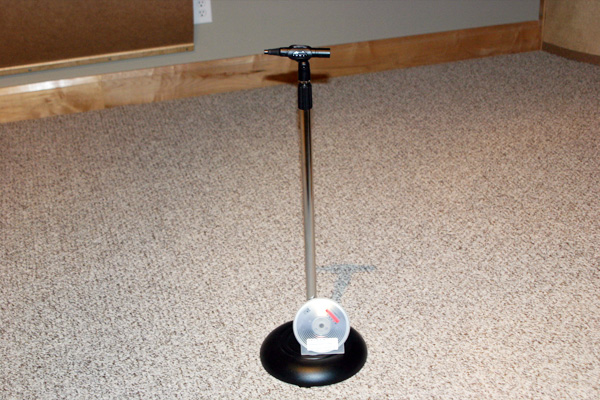
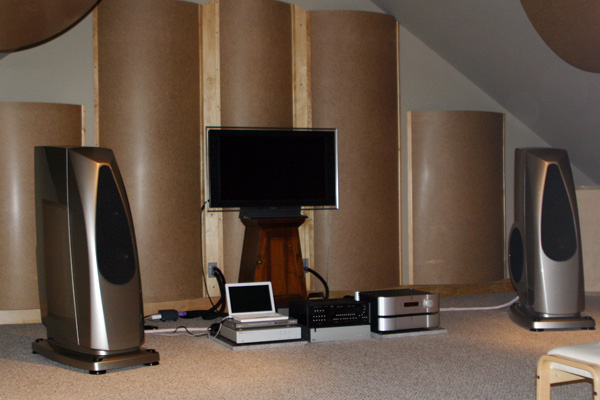
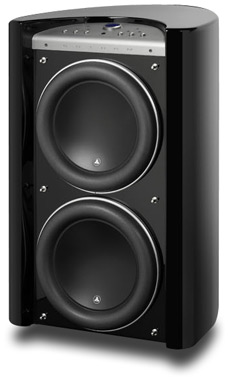 Anthem’s answer
Anthem’s answer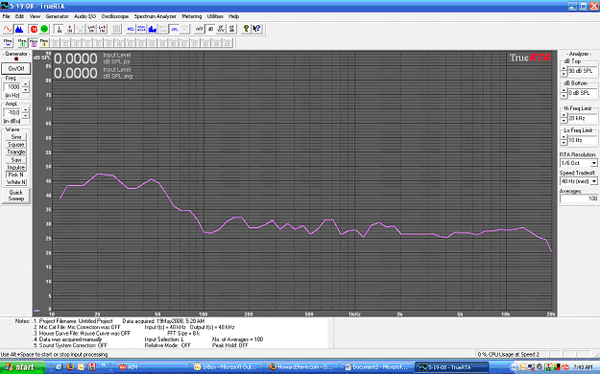
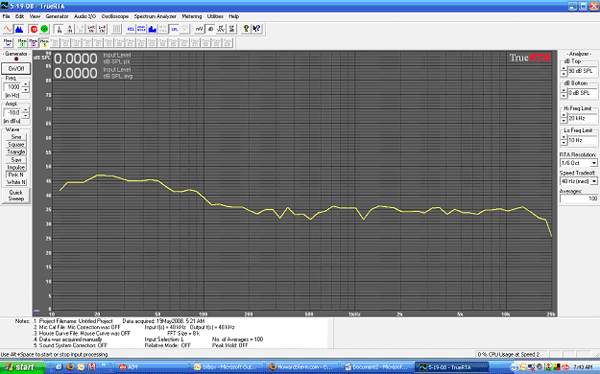
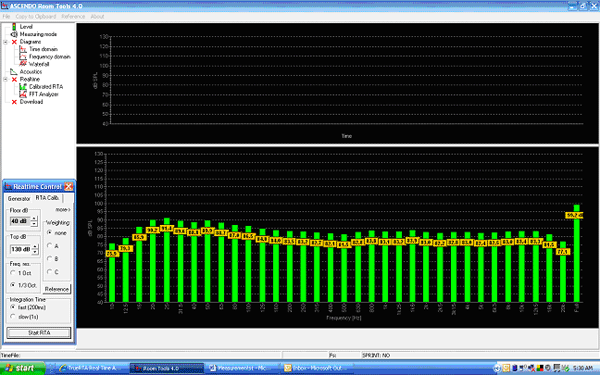
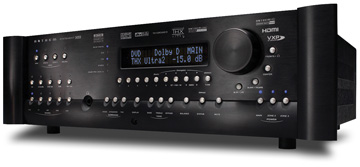 Anthem’s ARC room-correction
system proved invaluable in setting up my two loudspeakers and two large subwoofers.
ARC’s ability to integrate the subs and mains was nearly faultless; what it came up
with was better than anything I’d been able to accomplish with manual adjustments.
But the ARC was valuable for more than just the proper integration of subs and mains. The
Anthem designers evidently knew what they were doing when they decided to set as their
target frequency response an "ideal" curve that actually deviates from a flat
response. The critical element -- using natural room gain to achieve a smoothly rising
in-room bass response -- proved just what the doctor ordered in terms of musical
enjoyment. Manually flattening out the frequency response (i.e., reducing the room
gain to obtain no rise in the bass) and A/B-ing the results convinced me that a perfectly
flat frequency response does not give you the best sound. Smoothly rising bass
works beautifully. Sharp peaks and nulls, on the other hand, do nothing but harm the
sound. ARC: Flat, no. Smooth, yes.
Anthem’s ARC room-correction
system proved invaluable in setting up my two loudspeakers and two large subwoofers.
ARC’s ability to integrate the subs and mains was nearly faultless; what it came up
with was better than anything I’d been able to accomplish with manual adjustments.
But the ARC was valuable for more than just the proper integration of subs and mains. The
Anthem designers evidently knew what they were doing when they decided to set as their
target frequency response an "ideal" curve that actually deviates from a flat
response. The critical element -- using natural room gain to achieve a smoothly rising
in-room bass response -- proved just what the doctor ordered in terms of musical
enjoyment. Manually flattening out the frequency response (i.e., reducing the room
gain to obtain no rise in the bass) and A/B-ing the results convinced me that a perfectly
flat frequency response does not give you the best sound. Smoothly rising bass
works beautifully. Sharp peaks and nulls, on the other hand, do nothing but harm the
sound. ARC: Flat, no. Smooth, yes.